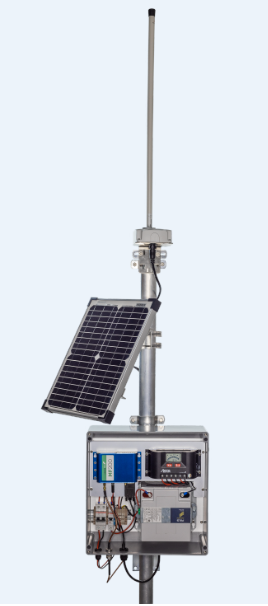
-
StatusOngoing
-
Status date2022-04-28
-
Activity Code7A.068
The objectives of the performed development activities were to add enhancements to an existing optimised LoRaWAN to satellite software stack for advanced LoRaWAN over Satellite features including compatibility with LoRaWAN cloud-based management tools (Third-party NOC, IoT Platforms), LoRaWAN COTS sensor integration interfaces (ThingNOC API) and LoRaWAN security standards (LoRaWAN 1.1. security, Downlink firmware updates).

The key challenges of the project were in the complexity of adding advanced software enhancements optimised for Satellite packet data services to support and facilitate the integration and deployment of large-scale LoRaWAN sensor networks while maintaining airtime traffic and operation expenses at a minimum for these deployments.
The advanced features developed as part of this project facilitate IoT deployments in remote industries such as for example agriculture, mining, energy and utilities but it is technology that is useful for any industrial application in remote areas where LoRaWAN sensors can be applied. These industries operate in remote areas across the globe where cellular internet coverage is either patchy or non-existent. They are increasingly being digitized where IoT sensors are increasingly being used to optimise resource consumption and productivity. Our solution addresses this market by offering a Gateway that is compatible with and optimizes Commercial Off-The-Shelf (COTS) LoRaWAN components with existing satellite networks. This compares to many new solutions’ use of proprietary sensor nodes and/or new satellite networks. This approach offers customers the advantages of using trusted satellite networks with global service that exist today and have well established cost structures and financial stability. It also offers customers the advantage of a very wide range of choices of native LoRaWAN sensors to pick the device that best fit their project and their budget.
The product features that are covered by the project activities are advanced enhancements to an existing optimised LoRaWAN to satellite software stack. These features are:
-
The ThingNOC API which is an API that allow Original Equipment Manufacturers (OEM) of sensors to integrate their products with the MinFarm LoRaWAN Gateway.
-
The Third-party NOC Proxy which enables integration of the Gateway product with a range of LoRaWAN management tools.
-
The IoT Platform Proxy to make the MinFarm LoRaWAN Gateway compatible with major COTS IoT platform tools, e.g. AWS and Azure.
-
Downlink firmware update and device config which enables this to be done remotely.
-
Compatibility with LoRaWAN 1.1 security features.
The MinFarm stack is comprised of the MinFarm Gateway and the MinFarm ThingNOC. The MinFarm Gateway runs a Network Server, Join Server, Payload Broker and Bridge Client. The MinFarm Gateway enables LoRaWAN sensors to work over high latency, low bandwidth, high airtime cost and non-IP satellite services. The MinFarm Gateway terminates the LoRaWAN traffic at the Network Server running on the gateway in the field. Therefore, the Join Request is processed by this field gateway. This means that no modification is required to connected LoRaWAN sensor's code. The packet size per sensor update is kept low by the Bridge Client running on the MinFarm LoRaWAN Gateway.
The MinFarm ThingNOC runs all the services (including the Bridge Server) required to process messages from the Satellite Terminal mailbox and forward them to the sensors’ desired cloud based IoT service (e.g. Application servers, Third party NOCs etc). It also allows the customer to manage their Devices, Satellite Terminals and MinFarm Gateways through a UI and API.
The Technology phase of the MinFarm Optimised LoRaWAN to Satellite Software Stack project was completed in Q1 2022. During this phase of the project the advanced features were developed and verification testing was performed.
The Technology phase of the MinFarm Optimised LoRaWAN to Satellite Software Stack project was completed in Q1, 2022.




